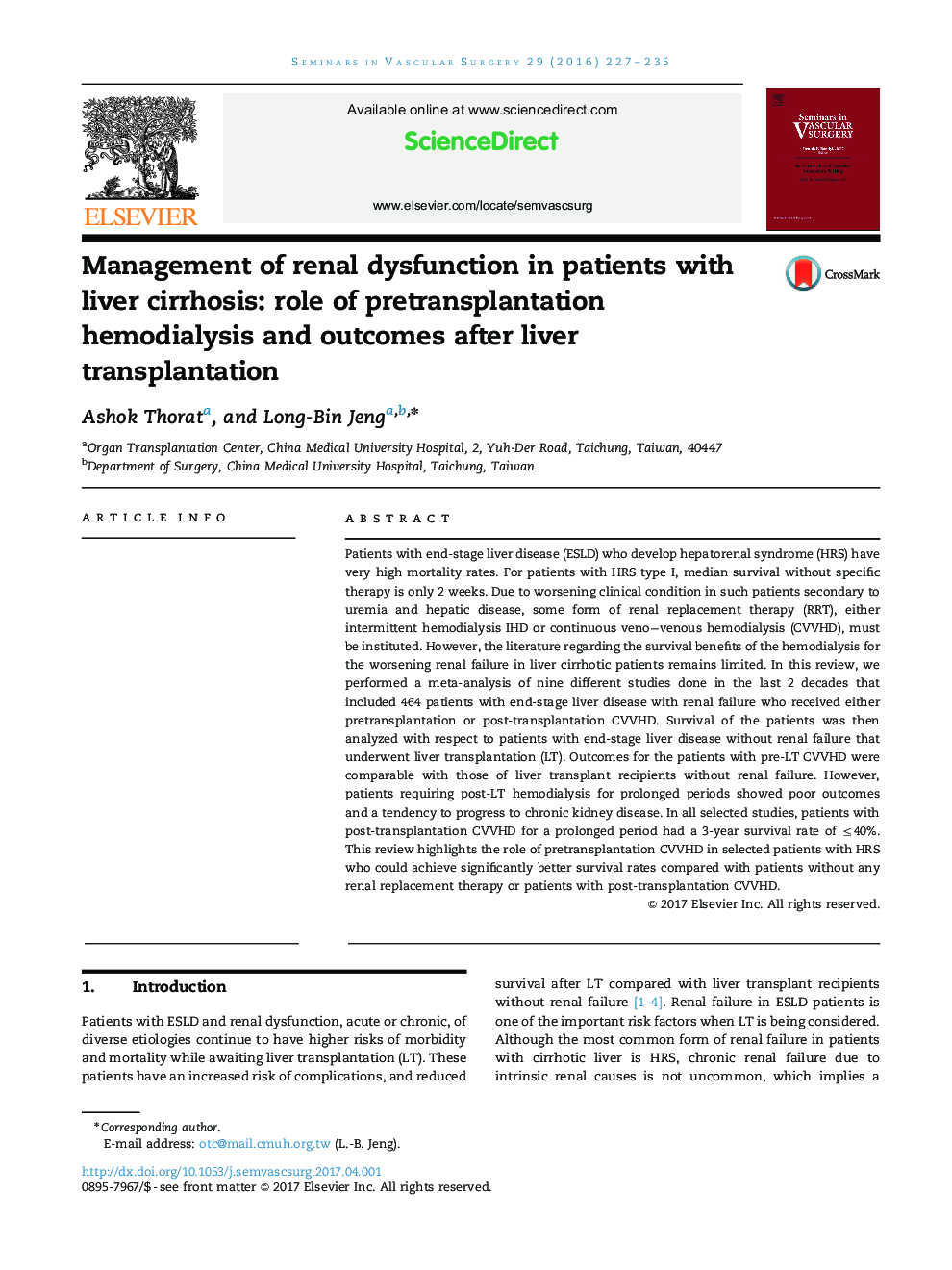| Article ID | Journal | Published Year | Pages | File Type |
|---|---|---|---|---|
| 5621686 | Seminars in Vascular Surgery | 2016 | 9 Pages |
Patients with end-stage liver disease (ESLD) who develop hepatorenal syndrome (HRS) have very high mortality rates. For patients with HRS type I, median survival without specific therapy is only 2 weeks. Due to worsening clinical condition in such patients secondary to uremia and hepatic disease, some form of renal replacement therapy (RRT), either intermittent hemodialysis IHD or continuous venoâvenous hemodialysis (CVVHD), must be instituted. However, the literature regarding the survival benefits of the hemodialysis for the worsening renal failure in liver cirrhotic patients remains limited. In this review, we performed a meta-analysis of nine different studies done in the last 2 decades that included 464 patients with end-stage liver disease with renal failure who received either pretransplantation or post-transplantation CVVHD. Survival of the patients was then analyzed with respect to patients with end-stage liver disease without renal failure that underwent liver transplantation (LT). Outcomes for the patients with pre-LT CVVHD were comparable with those of liver transplant recipients without renal failure. However, patients requiring post-LT hemodialysis for prolonged periods showed poor outcomes and a tendency to progress to chronic kidney disease. In all selected studies, patients with post-transplantation CVVHD for a prolonged period had a 3-year survival rate of â¤40%. This review highlights the role of pretransplantation CVVHD in selected patients with HRS who could achieve significantly better survival rates compared with patients without any renal replacement therapy or patients with post-transplantation CVVHD.
